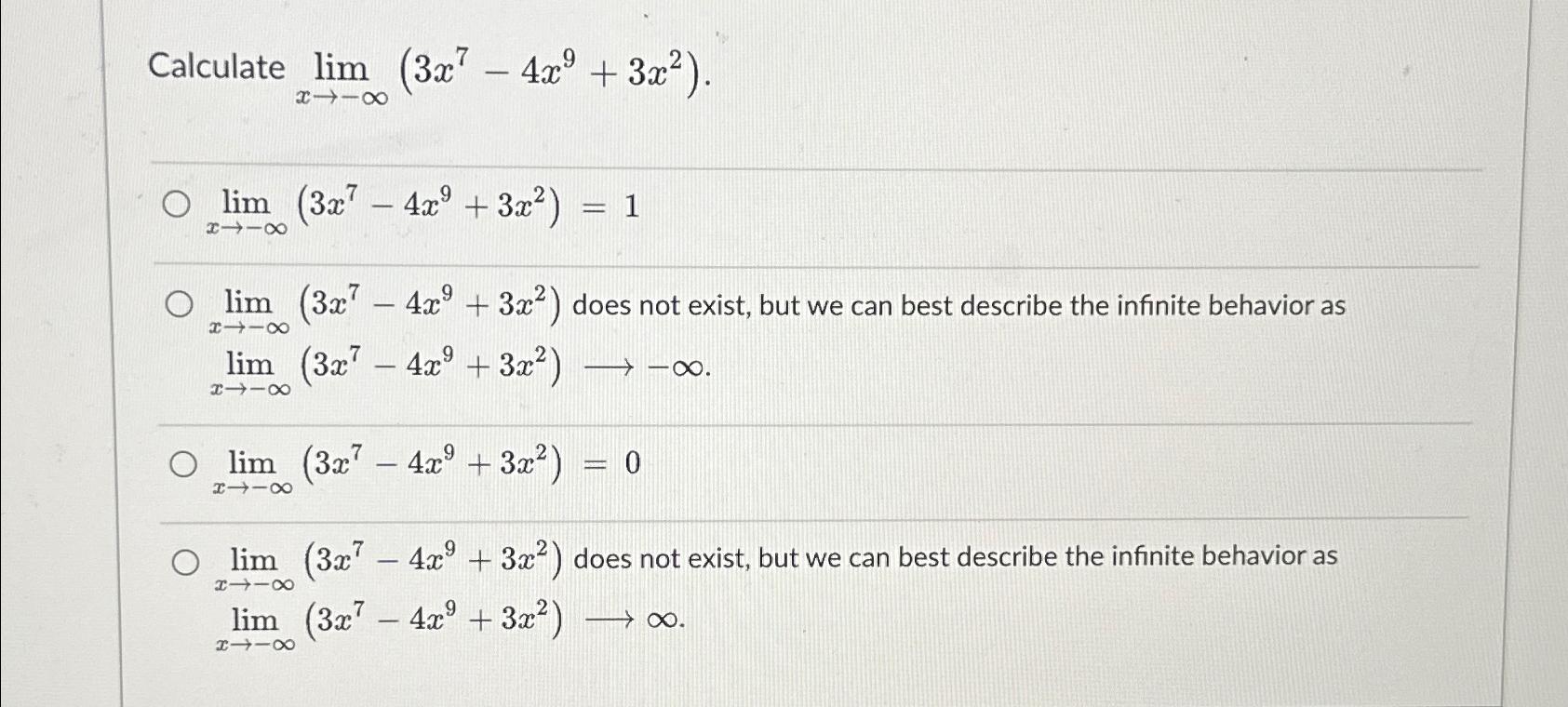Answered step by step
Verified Expert Solution
Question
1 Approved Answer
Calculate lim_(x->-infty )(3x^(7)-4x^(9)+3x^(2)) . lim_(x->-infty )(3x^(7)-4x^(9)+3x^(2))=1 lim_(x->-infty )(3x^(7)-4x^(9)+3x^(2)) does not exist, but we can best describe the infinite behavior as lim_(x->-infty )(3x^(7)-4x^(9)+3x^(2))longrightarrow-infty . lim_(x->-infty
Calculate
\\\\lim_(x->-\\\\infty )(3x^(7)-4x^(9)+3x^(2)).\
\\\\lim_(x->-\\\\infty )(3x^(7)-4x^(9)+3x^(2))=1\
\\\\lim_(x->-\\\\infty )(3x^(7)-4x^(9)+3x^(2))does not exist, but we can best describe the infinite behavior as
\\\\lim_(x->-\\\\infty )(3x^(7)-4x^(9)+3x^(2))longrightarrow-\\\\infty .\
\\\\lim_(x->-\\\\infty )(3x^(7)-4x^(9)+3x^(2))=0\
\\\\lim_(x->-\\\\infty )(3x^(7)-4x^(9)+3x^(2))does not exist, but we can best describe the infinite behavior as
\\\\lim_(x->-\\\\infty )(3x^(7)-4x^(9)+3x^(2))longrightarrow\\\\infty .

Step by Step Solution
There are 3 Steps involved in it
Step: 1

Get Instant Access to Expert-Tailored Solutions
See step-by-step solutions with expert insights and AI powered tools for academic success
Step: 2

Step: 3

Ace Your Homework with AI
Get the answers you need in no time with our AI-driven, step-by-step assistance
Get Started


